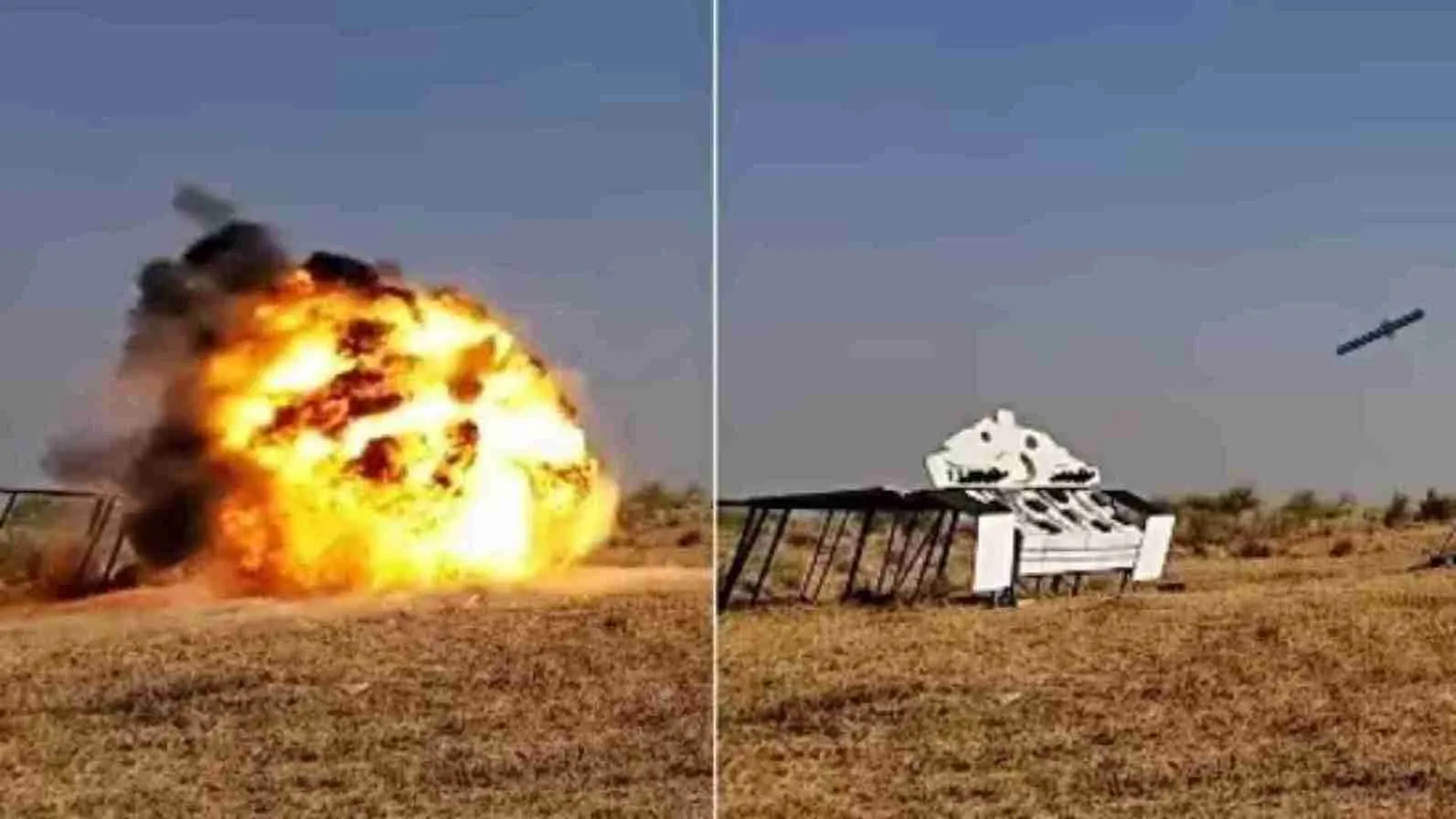

India Successfully Tests Anti-Tank Missile Nag Mk-2: Why Pakistan and China Should Be On Alert | WATCH
India’s military capabilities received a significant upgrade on January 13, 2025, as the Defence Research and Development Organisation (DRDO) successfully carried out field evaluation trials of the domestically developed third-generation anti-tank guided missile (ATGM) Nag Mk-2. These trials, conducted at the Pokhran field range in Rajasthan, mark a major step forward in India’s self-reliance in defence technology.
The trials of the Nag Mk-2 missile, along with its Nag Missile Carrier Version-2, were conducted with the active participation of senior Indian Army officers. The missile system demonstrated its capabilities by accurately targeting and destroying all test targets across maximum and minimum ranges. This successful demonstration confirmed the missile’s effectiveness and marked a milestone for India’s indigenous weapons development program.
In a statement, the DRDO confirmed that the missile’s firing range, both at maximum and minimum ranges, was validated during the three field trials. Defence Minister Rajnath Singh congratulated the DRDO, the Indian Army, and the industrial teams for their efforts in making the successful trials possible.
The Nag Mk-2 is an advanced, all-weather, fire-and-forget anti-tank missile, designed to lock onto targets after launch, requiring minimal operator intervention. It is specifically engineered to target modern armoured vehicles, including those equipped with Explosive Reactive Armour (ERA), making it highly effective in contemporary warfare scenarios.
The Nag Mk-2 missile is launched from the NAMICA (Nag Missile Carrier), an armoured vehicle based on the Indian-made BMP-2 Sarath. This mobile and amphibious platform allows the missile to be deployed swiftly across various terrains, enhancing the operational flexibility of the Indian Army.
The successful induction of the Nag Mk-2 into the Indian Army marks a monumental step towards achieving self-reliance, or atma-nirbhar, in India’s defence sector. For years, India has been dependent on foreign suppliers for anti-tank missiles, such as the purchase of Spike missiles from Israel following heightened tensions with China in 2020.
The induction of this indigenous missile not only bolsters India’s defensive capabilities but also serves as a strong deterrent against potential adversaries like Pakistan and China. The missile’s fire-and-forget feature and its advanced infrared guidance system set it apart from rival missiles, such as Pakistan’s Barq and China’s HJ-10, which lack similar autonomous capabilities.
In particular, the Nag Mk-2 enhances India’s edge over Pakistan and China in terms of anti-tank warfare, as it is less vulnerable to countermeasures, thanks to its advanced technology and design.
With the Nag Mk-2 now successfully tested and ready for induction into the Indian Army, the country’s military preparedness has been significantly strengthened. This marks a crucial phase in India’s journey to develop self-sustaining defence capabilities, which will provide a strategic advantage on the international stage.
As global tensions rise, the Nag Mk-2 missile positions India as a formidable force in regional geopolitics, ready to safeguard its borders and interests with cutting-edge indigenous technology.
Shubman Gill is being groomed for future leadership roles in India, despite challenges in his…
Donald Trump’s $TRUMP meme coin surged to $8 billion within hours of its launch. It’s…
Saif Ali Khan's attacker sent to police custody till Jan 24; defense denies claims of…
A dedicated Chinese Shin-Chan fan spends ₹3.5 crore to recreate the iconic house from the…
A 70-year-old Mumbai watchman, Guptaji, travels 20 km daily with his 30 kg dog, Tiger,…
TikTok was banned in the US as a law takes effect, removing the app from…